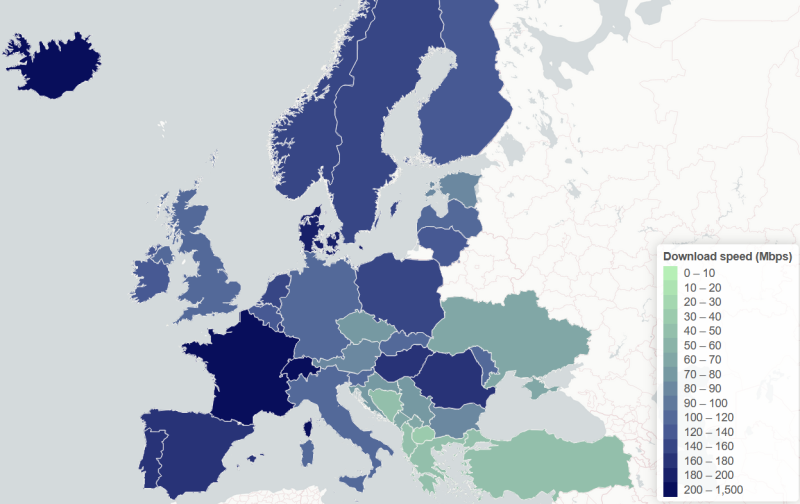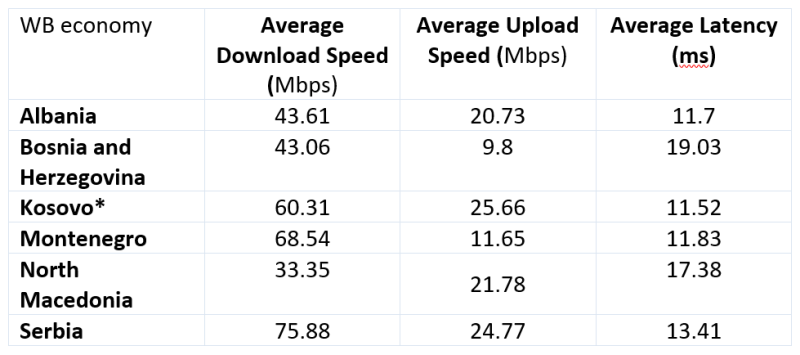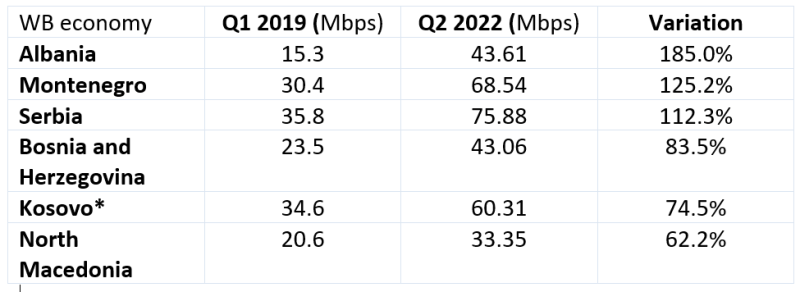Western Balkans' Internet Speed Performance

Is the Western Balkans' internet speed performance good enough to support digital transformation and innovation ecosystem developments?
The EU's connectivity objective set for 2025 is the download speed of 100 Megabits per second (Mbps) networks reaching all European corners.
The objective also includes the possibility of upgrading those networks to reach much higher speeds.
So how exactly is the region faring in relation to the EU?
The regions' internet speed performance
According to the European Data Journalism Network, the broader region of Southeast Europe is performing poorly compared to the rest of the European Union.
In our broader region, only Romania and Slovenia reached 100 Mbps download target.
Bulgaria (80.32 Mbps), Croatia (73.5 Mbps), and Greece (42.34 Mbps) are well below the target.
Blue spots below indicate parts of Europe that exceeded the set average download speed target in the second quarter of 2022.

Unfortunately, the region's connectivity is well below the EU set targets.
Internet connectivity data show that Serbia's average download speed is the best in the region.
Yet, it is still 3/4 of the EU set target.
On the other hand, Albania, Bosnia and Herzegovina and North Macedonia are well below the EU average.

There are some promising signs since some of the region’s economies have significantly improved their internet performance between Q1 2019 and Q2 2022.
Albania nearly doubled its internet speed connectivity.
Others are seriously underperforming as the table below indicates.
Variation from Q1 2019 to Q2 2022, values expressed in Mbps.

Bosnia and Herzegovina, Kosovo* and North Macedonia seem to be struggling to keep up.
It has to be noted that the Western Balkan economies do not have access to the EU's cohesion policy funds for ICT projects.
However, the available funds to improve broadband connectivity are poorly used by all Southeast European countries.
Years will be needed to balance out various levels of development around Europe.
